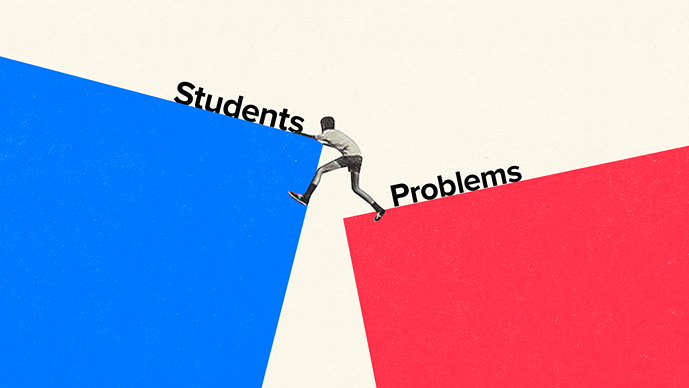Definition of Student Boundaries
Setting and maintaining healthy Student Boundaries is an integral aspect of personal and academic growth for students. Boundaries, These boundaries serve as a framework for how students interact with others and manage their responsibilities.
Importance of Student Boundaries in Personal and Academic Life
Understanding the importance of Student Boundaries is crucial for students to navigate the complex landscape of personal relationships and academic challenges. Clear boundaries contribute to a sense of self-control, fostering a healthy balance between individual needs and external expectations.
Significance of Teaching Students about Boundaries
Educating students about setting and maintaining Student Boundaries is a proactive approach to equipping them with essential life skills.
By instilling this knowledge early on, educators and mentors empower students to make informed decisions, cultivate self-respect, and establish a foundation for success in both personal and academic spheres.
Understanding Students Boundaries

Different Types of Boundaries
Personal Boundaries: These involve setting limits on personal space, emotions, and interactions with others. Personal Student Boundaries help students define their individuality and establish a sense of self-worth.
Academic Boundaries: Academic boundaries focus on managing time effectively, setting realistic goals, and understanding one’s capacity for academic work.
This includes learning to say ‘no’ when necessary and prioritizing tasks to maintain a healthy balance between studies and personal life.
The Role of Boundaries in Fostering Healthy Relationships
Healthy relationships are built on mutual respect, understanding, and clear communication. Student Boundaries provide the framework for defining acceptable behavior, ensuring that individuals feel safe and respected in their interactions with others.
Understanding and respecting the boundaries of oneself and others contribute to the development of positive and fulfilling relationships.
Common Challenges Faced by Students
Students often encounter challenges when attempting to establish and maintain boundaries. Peer pressure, fear of rejection, and the desire to fit in can make it difficult for students to assert their limits. Understanding these challenges is crucial in developing effective strategies to overcome them.
Setting Healthy Personal Boundaries
Self-awareness
Recognizing Personal Needs and Limits: Encouraging students to reflect on their personal needs and limits is the first step in setting healthy Student Boundaries. This involves understanding emotional, physical, and mental well-being and recognizing when to prioritize self-care.
Identifying Areas Where Boundaries are Needed: Students should be guided to identify specific areas in their personal lives where boundaries are necessary. This could range from managing social commitments to protecting personal time for relaxation and leisure.
Communication Skills
Assertiveness and Expressing Needs: Developing assertiveness is a key communication skill for setting and maintaining Student Boundaries. Students need to learn how to express their needs and concerns confidently, without compromising their values or well-being.
Saying ‘No’ Respectfully: Learning to say ‘no’ is an essential aspect of setting boundaries. Students should understand that declining a request or invitation is not a rejection but a necessary act of self-preservation.
Balancing Independence and Collaboration
Setting personal boundaries does not mean isolating oneself from others. It involves finding a balance between independence and collaboration. Students should learn to collaborate effectively while ensuring that their individual needs and priorities are respected.
Establishing Academic Boundaries

Time Management
Importance of Prioritizing Tasks: Effective time management is a cornerstone of academic success. Students need to prioritize tasks based on urgency and importance, ensuring that they allocate time and energy to activities that contribute most to their academic goals.
Setting Realistic Goals and Deadlines: Unrealistic expectations can lead to stress and burnout. Teaching students to set achievable goals and realistic deadlines helps them maintain a healthy academic pace without compromising their well-being.
Collaboration and Teamwork
Communicating Expectations within Group Projects: In collaborative academic settings, clear communication is crucial. Students should be encouraged to articulate their expectations and contributions within group projects to avoid misunderstandings and conflicts.
Balancing Individual Contributions with Group Dynamics: Striking a balance between individual contributions and group dynamics is vital. Students should understand the value of teamwork while ensuring that their individual efforts are recognized and appreciated.
Maintaining Healthy Boundaries

Regular Self-assessment
Reflecting on Personal and Academic Experiences: Regular self-assessment allows students to reflect on their experiences, identifying areas where boundaries are working well and areas that may need adjustment.
Adjusting Boundaries Based on Evolving Needs: As students grow and face new challenges, their boundaries may need to evolve. Teaching them to be adaptable and adjust their boundaries based on changing circumstances is a valuable skill.
Seeking Support
Utilizing Resources such as Counselors, Mentors, or Advisors: Students should be aware of and comfortable seeking support from available resources. Counselors, mentors, and advisors can provide guidance and assistance in navigating challenges related to personal and academic Student Boundaries.
Building a Supportive Network: Encouraging students to build a supportive network of friends and peers fosters an environment where they can openly discuss their experiences and share insights, further reinforcing the importance of maintaining healthy boundaries.
Challenges and Solutions

Common Challenges in Maintaining Boundaries
Peer Pressure: Addressing the impact of peer pressure on boundary-setting is essential. Students need strategies to resist negative influences and make choices aligned with their values.
Fear of Missing Out (FOMO): The fear of missing out can lead students to overcommit and neglect their boundaries. Providing coping mechanisms and strategies to manage FOMO helps students maintain a balanced and healthy lifestyle.
Strategies for Overcoming Challenges
Peer Communication and Peer Support: Encouraging open communication among peers can help students navigate challenges collectively. Peer support creates a sense of community and reinforces the idea that everyone faces similar struggles.
Developing Resilience and Coping Mechanisms: Building resilience is crucial for overcoming challenges. Teaching students effective coping mechanisms, such as mindfulness or stress management techniques, equips them with tools to navigate difficult situations while maintaining their boundaries.
Real-life Examples of Students Successfully Navigating Boundaries
Sharing real-life examples of students who have successfully navigated personal and academic Student Boundaries provides tangible evidence of the benefits of effective boundary-setting.
Lessons Learned from Instances Where Boundaries Were Not Maintained
Analyzing instances where Student Boundaries were not maintained can provide valuable lessons. Understanding the consequences of boundary violations reinforces the importance of setting and maintaining healthy limits.
Conclusion
Summarizing the key points reinforces the significance of setting and maintaining healthy boundaries. It emphasizes that these skills are not only crucial during the student years but also contribute to long-term personal and professional success.










